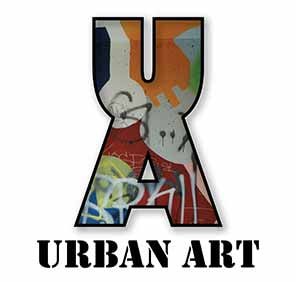I have always wondered why I can’t paint a straight line. It used to keep me up at night. After all, I call myself an artist; straight lines should be one of my skills.

In college in the ’70s, I wanted to paint like the Surrealists. If you’ve been involved in the visual arts for a while, you know that realistic painting was frowned upon in the ’70s. I went to college in the ’70s, and in proper form, it was all about the teachers were all about Abstraction.
To be successful in Surrealist techniques, an artist must fully understand correct perspective, lighting, and how to paint and draw textures to convince the viewer. In other words, a Surrealist must fully understand realistic techniques.

Let’s look at the painting by French painter Yves Tanguy, called Through Birds, Through Fire but Not Through Glass, created in 1943. It has some sort of structure. Over the structure, there appears to be fabric, and the material is shiny. The structure and various objects are in an environment that feels like it is outdoors. I base that comment mainly on the foggy texture in the upper background.

Where things get a little dicey is with the light source. The shadows suggest a strong light source coming from the lower right-hand side, except for the rectangle-shaped object on the far right, which gives conflicting information about the lighting. It’s no mistake; Tanguy knew what he was doing. After all, he is playing with reality but not going too far from what the viewer would expect with realistic lighting. Call it the artist prerogative. The point is that Tanguy understood perspective, lighting, and lifelike texture, so to convince the viewer of his surreal world.
After the ’70, my artwork went to total abstractions. Currently, my work has a more realistic turn, but it is still relatively flat, and the colors are expressive.
My point is that I had some experience painting realistically in my youth, meaning I have some background in the technique.
I recently met an artist in Michigan. He and his family own an antique business where they sell their paintings. They are a family of artists working in different styles. The husband, Dan, is a very accomplished photorealist. We got into an interesting discussion about his art and technique. I want to add that I have not been able to contact Dan since our initial conversation, so I won’t include his full name, assuming he would like privacy.
Photorealism is a genre of painting in which an artist studies a photograph and then reproduces the image as realistically as possible in paint. I’m not sure if Dan is currently painting, but the work I saw was based on photos he took old school. In other words, not digital. Dan developed his photographs in his lab, making multiple versions of each image in varying exposures to assist in painting the details.
Dan’s paintings are large, and he with oil paints and gouache. He makes gouache from scratch! Gouache is a tricky paint to work with, and I am amazed at how beautifully he handles it.*
Dan’s father was a sign painter. His dad worked with paint, painting by hand. I know little of that art, but I know a very steady hand is needed and a good understanding of painting techniques to stay employed in that field.
Dan’s supplies include a painting maul (a painting stick), a magnifying glass, very fluid paint, and multiple photos of his painting topic. He grids the canvas to scale, then eyes it from there, using his photo! I am completely amazed! I wish I could share pictures of his work as it is mind-blowing. Instead, I have shared the work of Chuck Close for those not familiar with photorealism.

Having spoken with Dan, I now fully understand why I can’t paint a straight line and feel somewhat relieved! As an artist, I get nerdy about how other artists apply brush strokes (and, yes, I intend to write about that!), but I always thought it was a failure on my part. I no longer worry about it. Dan has the gift. It is both in his hand and years of practice and patience. Probably a little bit of genetic too. I bet his dad had a steady hand.
As a bonus, I will no longer silently curse the painter Frank Stella for his razor-sharp ’60s geometric paintings! I saw the piece below at a retrospective in NYC. I hate to admit it, but I was secretly delighted to see a tiny wobble in a line at the right-hand bottom! You had to look hard to find it. Childish, I admit it, but I took a close-up of that spot to cherish silently!

*Gouache said like squash, but with a G on the beginning, has been around since the 18th century. It is similar to watercolor but is more opaque. It became popular with commercial artists in the early 20th century due to its ability to dry quickly and mat, not glossy like oil paints. This made it easier to create advertisements to photograph. Oils paints are glossy and are more challenging to photograph. The trick about working with gouache is getting the correct amount of water into the paint. If the artist doesn’t get the right mixture, the paint will literally crack and can fall off of the canvas or panel.

